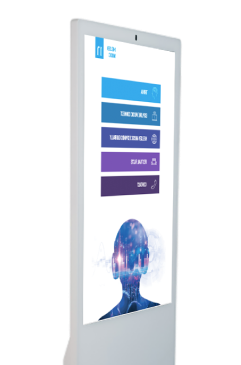

Event Solutions

Our Work

Why Interactive Displays Are Perfect for Business
There was a time when merchandising displays broke the mold with simple video loops or motion sensors encouraging audio call-to-actions. Building on the foundation of these features, many of today's interactive displays go even further with unique ideas to showcase and demo goods. It's no wonder to see pioneering brands implementing unique features into their merchandising plans. Not only does technology offer information collection abilities, but incorporating entertaining modules excites shoppers and encourages buying. Eventually, interactive displays can lead to deeper customer education and brand faithfulness. Interactive displays with touchscreens
For over a decade now, touch kiosks have revolutionized our everyday capabilities. We use them to order food, pay for parking and check bags, so it's easy to forget that touchscreens weren't always the standard. Because the technology is deep-rooted and widely used today, some companies have improved merchandising displays with touchscreens to give customers a hands-on, self-service experience. Uses often include shopping a never-ending aisle, looking up additional product information, or tailoring merchandise.
When online goes offline
Omnichannel, integrated marketing, call it what you want. The point is, we're pretty familiar with the process of spreading our shopping experience across an assortment of digital platforms now. And with the customer’s eagerness to resume in-store shopping as the pandemic declines, once-digital brands are ramping up partnerships with traditional brick-and-mortars to reach a larger group of consumers. As these associations continue to flourish, watch for more experiential interactive displays from companies looking to capitalize on the customer's comfort level with interaction and digital networks. Overall, all interactive displays are a significant component to a brand’s successful marketing plan, calling attention to a brand's goods and building a loyal buyer base. Furthermore, interactive features that both stimulate and enlighten can go even further to set a brand apart from the competition. And with interactive displays of the future, technology will play a considerable role in providing a tailored and educational customer experience.